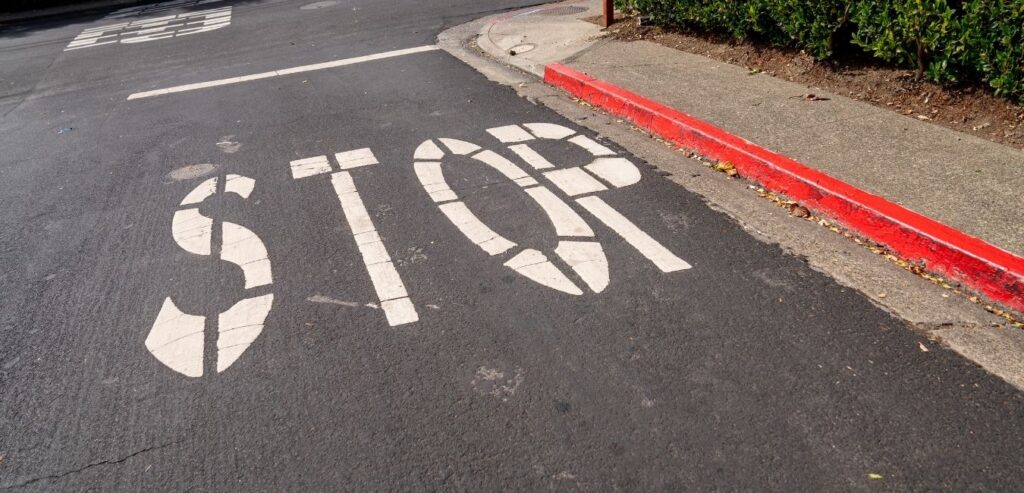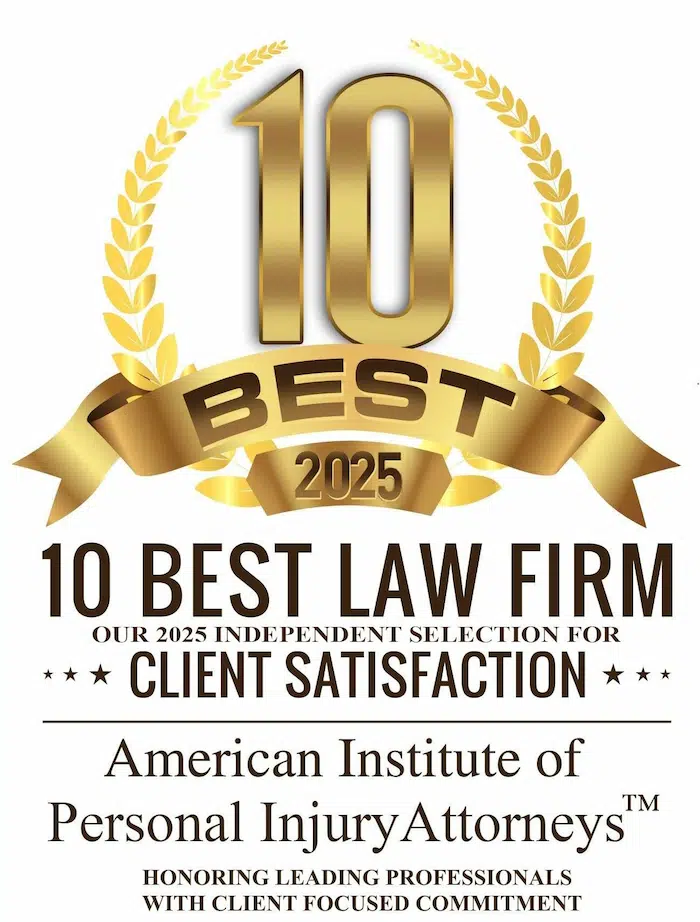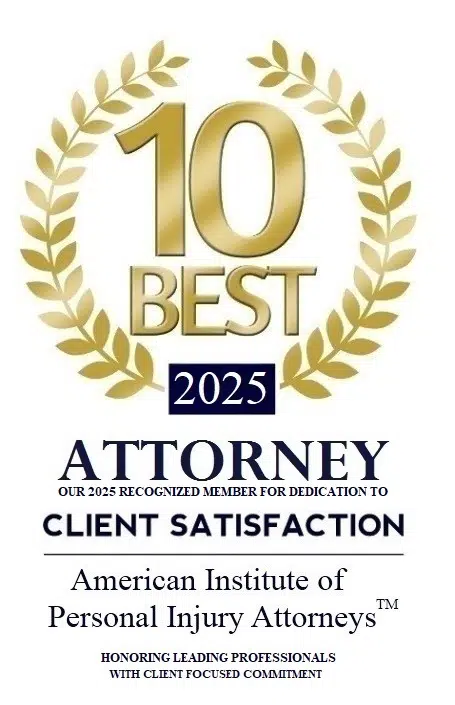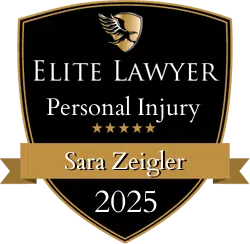WV Intersection Auto Accidents
In January 2020, a T-bone collision resulted in a motor vehicle being flipped onto its roof as it landed on the sidewalk near the steps leading up to Charlestown City Hall. Three people were injured and transported to the hospital. It was determined that the driver of the flipped car was at fault and had run a red light. In another recent incident, a 16-year-old boy was killed in a Jefferson county T-bone rollover crash, and a woman was seriously injured.
Unfortunately, these intersectional accidents are not unusual. According to the Federal Highway Administration, there are millions of intersection crashes in the United States each year, with T-bone accidents being the most frequent type of crashes that occur in intersections. T-bone crashes account for more than 40% of all traffic-related collisions and more than 20% of all car accident fatalities.
Since these types of crashes can be so severe and even fatal, it’s in your best interest to have an experienced intersectional auto accident attorney working on your behalf if you or a loved one has been the victim of a t-bone accident in West Virginia. An intersectional accident lawyer in WV will be able to prove fault and help make sure you are properly compensated.
Intersection Traffic Law in West Virginia
- At intersections controlled by stop signs, drivers are required by law to come to a complete stop, assess whether the intersection is clear, and then proceed through the intersection only when it’s safe.
- At intersections controlled by traffic signals, drivers must obey the lights or other signals, and again assess whether the intersection is clear before proceeding. Drivers turning left on a green light (without a green arrow) must yield to oncoming motor vehicles and only make the turn if they have sufficient time and space to do so.
- For intersections that do not have any traffic control devices, drivers must slowly approach the intersection until they can visually confirm in all directions that there are no approaching drivers who have the right-of-way.
- When pulling out of a driveway or parking lot onto the road, drivers must yield the right-of-way to vehicles already traveling in the lane that they wish to merge into and only proceed when there is a sufficient gap in traffic to safely do so.
- If there is an emergency vehicle approaching the intersection with its lights flashing or its siren on, drivers must yield the right-of-way regardless of whether they have a green light.
- Even if a driver comes to a complete stop briefly and then proceeds into traffic in the intersection causing a collision, the driver can be guilty of negligence and considered at-fault for resulting damages and injuries caused by the crash.
Liability for T-Bone Accidents
T-bone accidents generally occur in intersections and involve two vehicles, with the front of one vehicle striking the side of the other one. The resulting wreck resembles the shape of a ‘T’ when viewed from above. Generally, these wrecks occur when one driver has failed to appropriately yield the right-of-way to the other.
In most crashes, it’s a case of driver error, but there are other possibilities for where the legal liability lies. For instance, if a driver attempts to stop at an intersection but his brakes fail, causing him to blow through an intersection and strike another vehicle, the brake manufacturing company could have liability for the accident.
If the intersection has a malfunctioning stoplight or the stop sign is missing or not visible, the government agency that is in charge of maintaining those safety features might be liable for any accidents that result.
Or, if a vehicle has properly stopped at an intersection but is pushed into traffic by a car that rear-ended it, the driver that caused the rear-end accident would be liable for causing the t-bone accident as well.
So, while it’s generally a driver who has made a bad decision who is liable for t-bone accidents, there are certainly other scenarios in which the liability may lie with another party altogether. A West Virginia car accident attorney will be able to determine who is at-fault and liable in an t-bone crash situation through careful analysis and research.
A Few Main Causes of T-Bone Accidents
As we’ve established, t-bone accidents are overwhelmingly caused by driver error. However, many different driver behaviors can contribute, such as:
- Running a red light
Running red lights is a very dangerous decision since cross-traffic will not be expecting a vehicle crossing an intersection against the light and will not be prepared or able to stop in time to avoid a crash. While red-light cameras can help reduce red-light running, they are becoming less common due to concerns regarding due process rights. - Driver distraction
Drivers can easily become distracted while driving, whether it’s by texting or otherwise using a cell phone, eating or drinking, talking with other passengers, adjusting controls on the dash, or looking at things outside of the vehicle besides the road. Distraction can lead a driver to miss seeing a stop sign, not have enough time to stop at a red light, or otherwise lead to situations that result in a t-bone crash. - Speeding
Driving faster than the speed limit or faster than is safe for the road conditions reduces the amount of time the driver has to react to things around them, including traffic signals and other drivers, and it increases the distance needed to bring their vehicle to a stop. Speeding also makes it more difficult for other drivers to accurately judge gaps in traffic when they are moving through oncoming or cross traffic. - Misjudging the gap
Many drivers fail to accurately judge safe gaps in traffic and can’t complete their left turn or cross intersections in time to get out of the way of oncoming traffic, causing an intersectional accident. - Poor visual perception.
Many drivers who cause t-bone accidents claim they didn’t see the other driver coming, which usually means that they did not take enough time to fully look in all necessary directions before maneuvering into traffic. A common reason for this is that the driver performed a “rolling stop” rather than a full stop at a stop sign. - Impairment
Drivers who are impaired by alcohol, drugs, or fatigue cannot safely operate a vehicle. They are particularly likely to make errors in spatial judgment or blow through stop signs and red lights.

Why T-Bone Accidents Result in Such Severe Injuries
T-bone accidents are exceptionally dangerous and often result in severe injuries for occupants of the vehicle that was struck on the side because most passenger vehicle door panels lack the sufficient structure to be able to absorb the kinetic energy of the t-bone crash.
Despite recent improvements designed to reduce side-impact injuries, the sides of vehicles are still prone to collapse inward onto the occupants, especially in high-speed accidents.
High speeds increase the amount of force and therefore the structural damage to the vehicle, which is unfortunately transmitted to the occupant seated on the damaged side of the vehicle.
There is also a high potential for severe injuries where there is a large size discrepancy between the vehicle involved in the accident. A semi striking the side of a compact car is highly likely to inflict serious injuries, while a collision between two small cars may not be quite as severe in terms of injuries
Avoiding a Side-Impact Collision
There’s no way to completely protect yourself against t-bone crashes since they often occur as a result of another driver’s error, but there are a few things you can do to help reduce the risk:
- Always come to a complete stop at traffic control devices
Give yourself time to look in every direction before proceeding into an intersection. - Do not assume other drivers will yield the right-of-way.
Even when the other driver is required by traffic laws to yield the right-of-way to you, you should not assume that they will follow the law. When your light turns green, check to make sure the intersection is really clear before proceeding. - Avoid distractions
You should always avoid distractions when driving, but it’s especially important at intersections. A lot is going on in intersections so paying attention is paramount to safety. - Turn safely
While it’s often allowed to turn right on red lights, you still need to yield to drivers who are already in the lane that you want to join. If you are turning left on a green light, it’s always the best idea to wait for a green arrow.
Intersectional Accident Lawyers Serving WV for Over 30 Years
Our expert intersectional accident lawyers at Kaufman & McPherson are extensively experienced in handling intersectional (T-bone) collision cases.
Our lawyers will question drivers and witnesses, obtain traffic light sequences, scour any video footage of the accident, and otherwise analyze evidence to help you put together a successful case and win you the compensation you deserve.
If you or a loved one has recently been in an intersectional crash in West Virginia, contact us at Kaufman & McPherson today for a free case evaluation and legal advice.








